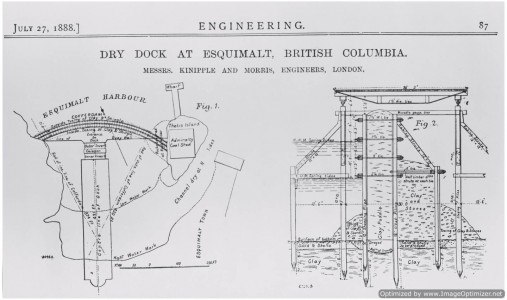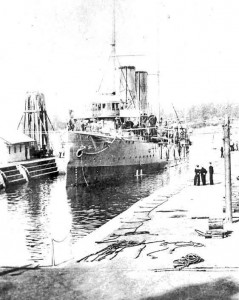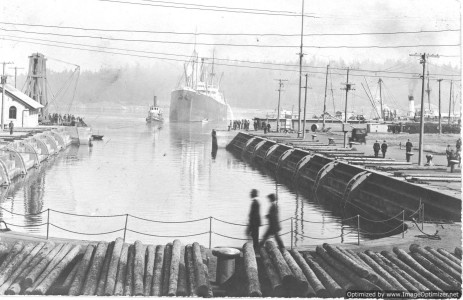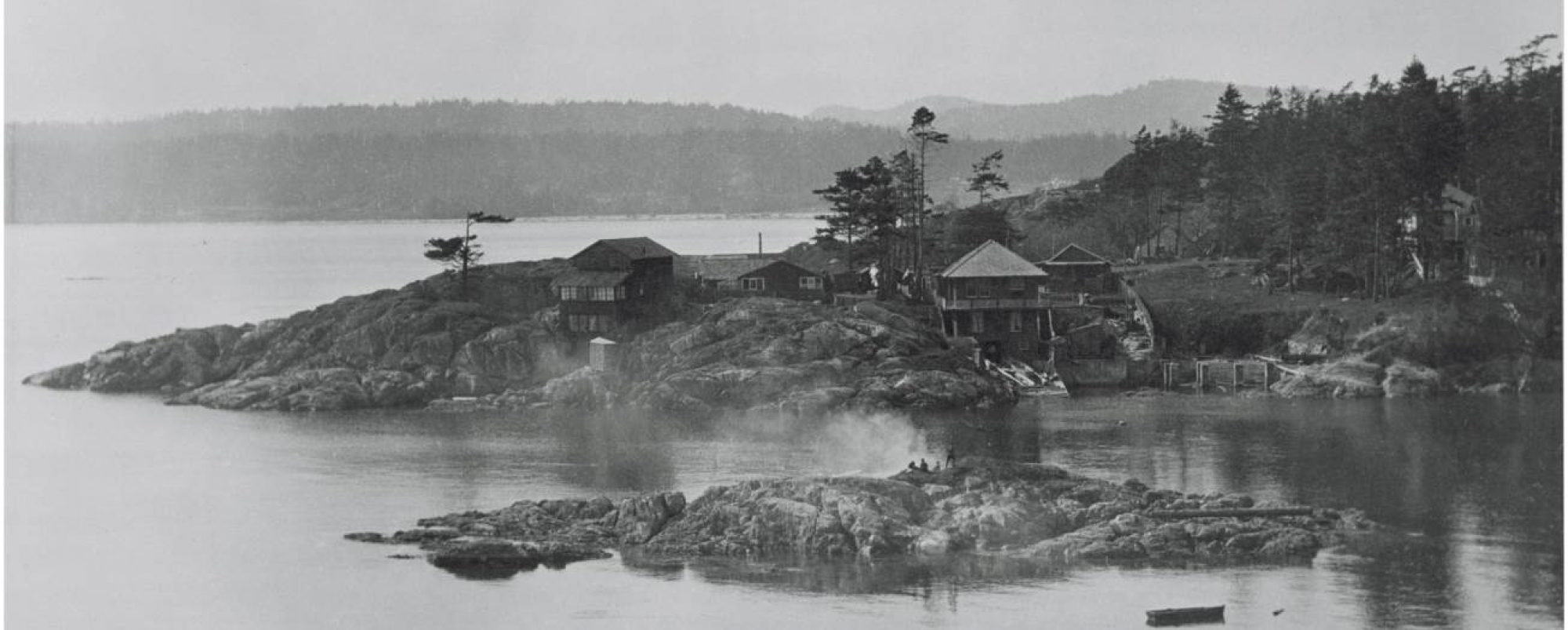 The drydock, or graving dock at Esquimalt Naval Base was built in response to a need for ships travelling the northern Pacific Coast to have a place to go for repairs or refits. It was perceived that the building of the Panama Canal would greatly increase marine traffic, and Canada wanted to be ready. 59
The drydock, or graving dock at Esquimalt Naval Base was built in response to a need for ships travelling the northern Pacific Coast to have a place to go for repairs or refits. It was perceived that the building of the Panama Canal would greatly increase marine traffic, and Canada wanted to be ready. 59
As early as 1860 discussion was underway regarding the need for such a facility, as the nearest one was in San Francisco. Begun as a joint venture between the Dominion and provincial governments and with Admiralty approval and sponsorship, it was completed in 1887 in Thetis Cove. The facility raised the profile of the dockyard among other Royal Navy bases that were overseas, and added to the versatility of the naval base. The Esquimalt naval dockyards were used mainly for coaling, provisioning and repair of Royal Navy ships and a few Canadian government ships. 60

The Graving Dock was kept busy during the war years, and many ships, including the RCN’s new submarines came in for repairs and refits.61 In the dock’s logbooks, evidence of wartime activity is evident is such entries as “Japanese cruiser ‘Idzumo’ came into Harbour fired a salute” (Aug 25, 1914). On the 27 and 28 of August, “Jap cruiser” is noted, followed by “All hands quit 9:30 – went and saw 500 troops off 10:30 on SS Sophia.” The Japanese cruisers were noted again on Sept 4, 1915 with “Three Jap boats came in harbour”.
On September 4, “Submarines put in Dry Dock”, then on July 4, 1916, “submarine CC1 on cradle”. HMCS Rainbow is also mentioned first on May 1, 1915 “HMCS Rainbow in dry dock” then again on June 9, 1916. A reference is also made to the construction of Yarrow’s sternwheelers in May, 1916 “began to build 6ft. steering wheel for sternwheel boat for India” that were destined for Burma. 62 (see Yarrows) The proximity of the drydock to Yarrows shipyard had been a decisive factor in Alfred Yarrow’s decision to purchase the BC Marine Railway. 63
by Catherine Gilbert

